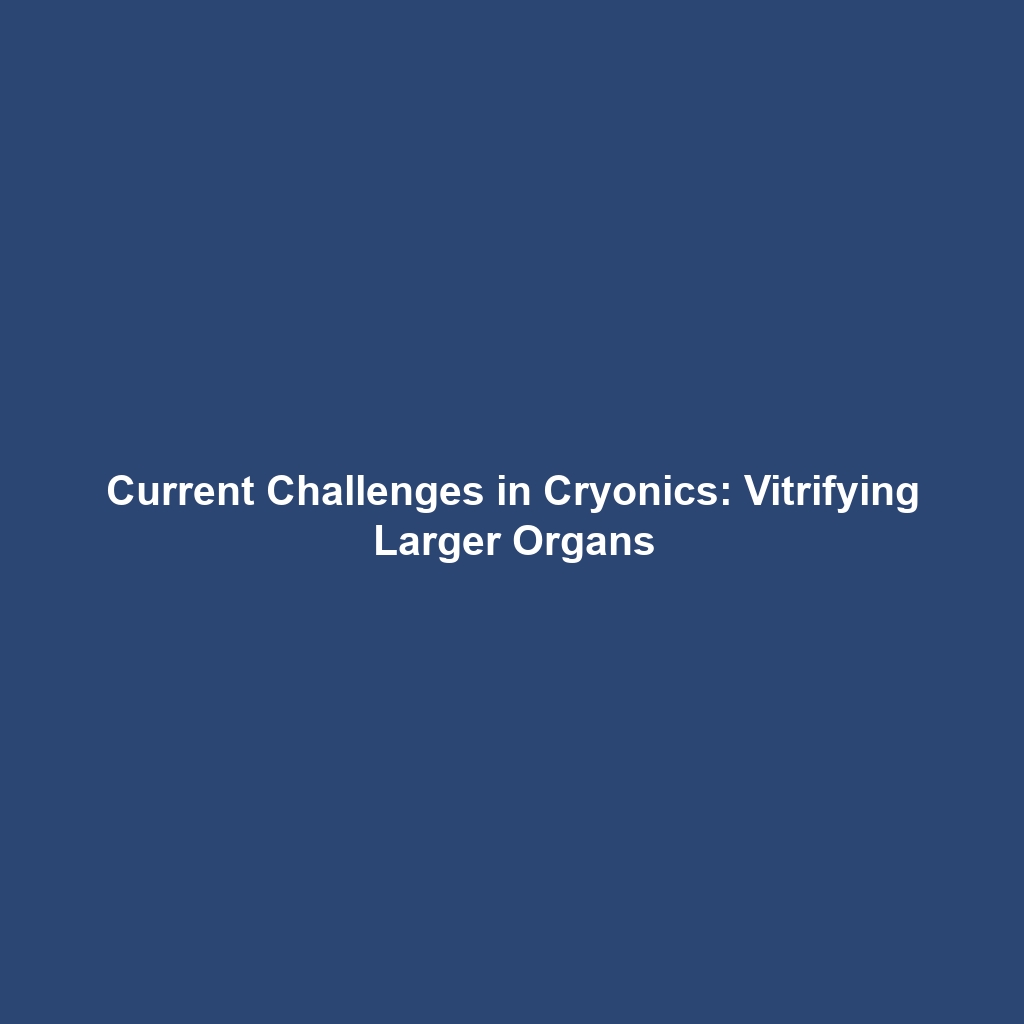Current Limitations: Vitrifying and Thawing in Cryonics
The field of cryonics and life extension has made significant strides over the years, particularly in the ability to vitrify and thaw small tissues with relative success. However, the challenges associated with larger organs and the entire body present much greater obstacles. Understanding these limitations is crucial for advancements in the quest for life extension and potentially reversing death. This article delves into these current limitations, the underlying principles, applications, challenges, and future innovations that could reshape the future of cryonics.
Key Concepts in Cryonics and Vitrification
At the heart of cryonics lies the concept of vitrification, a process that involves turning biological tissues into a glass-like state at very low temperatures, avoiding ice formation that could damage cells. Major concepts in this field include:
- Vitrification Techniques: Methods developed to help preserve cellular structure during the cooling process.
- Large Scale Vitrification: The ability to apply these techniques successfully on larger structures remains a key challenge.
- Thawing Processes: The methods used to safely reintroduce warmth and restore function once the preservation phase is complete.
Applications and Real-World Uses
Understanding the current limitations of vitrification has important applications within the larger scope of cryonics and life extension. Some significant uses include:
- Organ Banking: Research into optimizing vitrification could enhance organ donation compatibility and storage.
- Tissue Preservation: Techniques perfected through small tissue vitrification may one day allow for the preservation of large organs.
- Medical Research: Insights gained from studying tissue behavior post-vitrification could impact regenerative medicine approaches.
Current Challenges in Cryonics
The journey toward mastering the preservation of larger biological structures involves several pressing challenges:
- Scale Limitations: Current vitrification techniques do not translate well to larger organs due to their unique structural complexities.
- Cellular Damage: Ice crystals can form within larger tissues, leading to irreversible damage during the freezing process.
- Restorative Concerns: Thawing larger organs increases the risk of complications, impacting the viability and functionality post-thaw.
Future Research and Innovations
The future of cryonics depends on continued innovation in understanding the limitations of vitrification and thawing. Some areas of upcoming research include:
- Artificial Intelligence: Using AI to optimize processes and outcomes in large-scale vitrification.
- Next-Generation Cryoprotectants: Developing improved chemicals that prevent damages during freezing and thawing.
- Hybrid Preservation Methods: Combining various preservation techniques to enhance overall stability and cellular viability during and after the process.
Conclusion
In summary, while considerable advancements have been made in the field of cryonics, significant limitations remain in the vitrification and thawing of larger organs and whole bodies. Addressing these challenges will be crucial as researchers pursue breakthroughs that could potentially redefine life extension and bring new hope for those seeking future preservation options. For further reading on innovations in cryonics and application of vitrification technologies, explore our other articles on cryobiology and future technologies in life extension.
